Nishant Subramani
OLMo: Accelerating the Science of Language Models
Feb 07, 2024
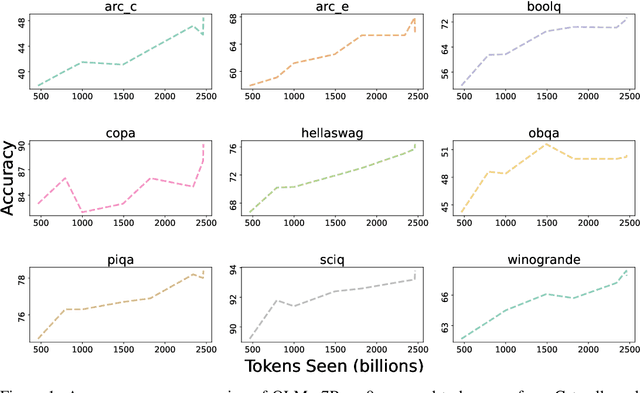
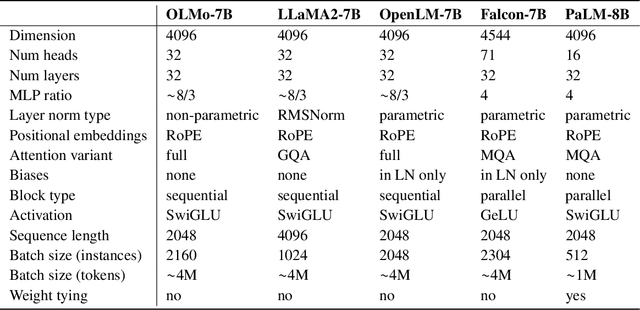
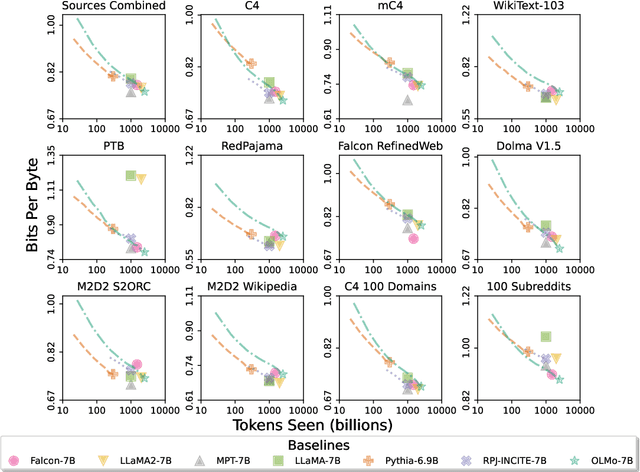
Abstract:Language models (LMs) have become ubiquitous in both NLP research and in commercial product offerings. As their commercial importance has surged, the most powerful models have become closed off, gated behind proprietary interfaces, with important details of their training data, architectures, and development undisclosed. Given the importance of these details in scientifically studying these models, including their biases and potential risks, we believe it is essential for the research community to have access to powerful, truly open LMs. To this end, this technical report details the first release of OLMo, a state-of-the-art, truly Open Language Model and its framework to build and study the science of language modeling. Unlike most prior efforts that have only released model weights and inference code, we release OLMo and the whole framework, including training data and training and evaluation code. We hope this release will empower and strengthen the open research community and inspire a new wave of innovation.
Dolma: an Open Corpus of Three Trillion Tokens for Language Model Pretraining Research
Jan 31, 2024



Abstract:Language models have become a critical technology to tackling a wide range of natural language processing tasks, yet many details about how the best-performing language models were developed are not reported. In particular, information about their pretraining corpora is seldom discussed: commercial language models rarely provide any information about their data; even open models rarely release datasets they are trained on, or an exact recipe to reproduce them. As a result, it is challenging to conduct certain threads of language modeling research, such as understanding how training data impacts model capabilities and shapes their limitations. To facilitate open research on language model pretraining, we release Dolma, a three trillion tokens English corpus, built from a diverse mixture of web content, scientific papers, code, public-domain books, social media, and encyclopedic materials. In addition, we open source our data curation toolkit to enable further experimentation and reproduction of our work. In this report, we document Dolma, including its design principles, details about its construction, and a summary of its contents. We interleave this report with analyses and experimental results from training language models on intermediate states of Dolma to share what we have learned about important data curation practices, including the role of content or quality filters, deduplication, and multi-source mixing. Dolma has been used to train OLMo, a state-of-the-art, open language model and framework designed to build and study the science of language modeling.
BLOOM: A 176B-Parameter Open-Access Multilingual Language Model
Nov 09, 2022Abstract:Large language models (LLMs) have been shown to be able to perform new tasks based on a few demonstrations or natural language instructions. While these capabilities have led to widespread adoption, most LLMs are developed by resource-rich organizations and are frequently kept from the public. As a step towards democratizing this powerful technology, we present BLOOM, a 176B-parameter open-access language model designed and built thanks to a collaboration of hundreds of researchers. BLOOM is a decoder-only Transformer language model that was trained on the ROOTS corpus, a dataset comprising hundreds of sources in 46 natural and 13 programming languages (59 in total). We find that BLOOM achieves competitive performance on a wide variety of benchmarks, with stronger results after undergoing multitask prompted finetuning. To facilitate future research and applications using LLMs, we publicly release our models and code under the Responsible AI License.
GEMv2: Multilingual NLG Benchmarking in a Single Line of Code
Jun 24, 2022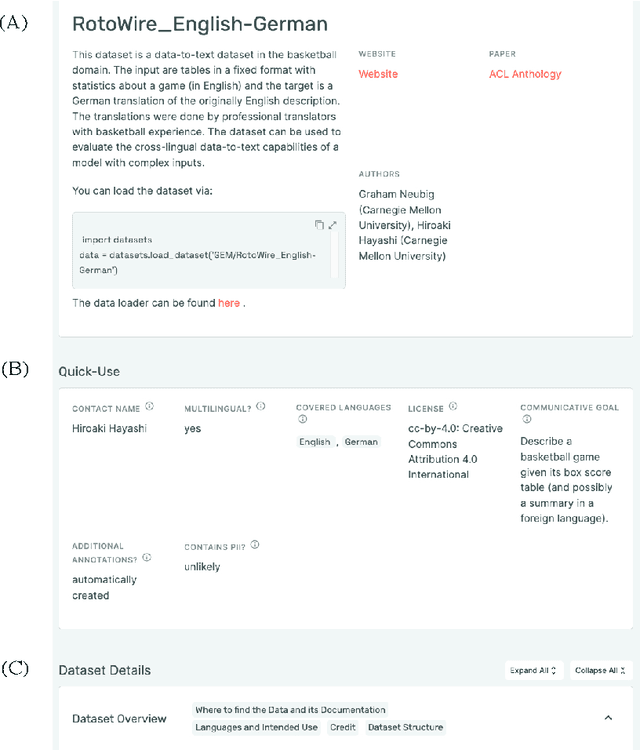
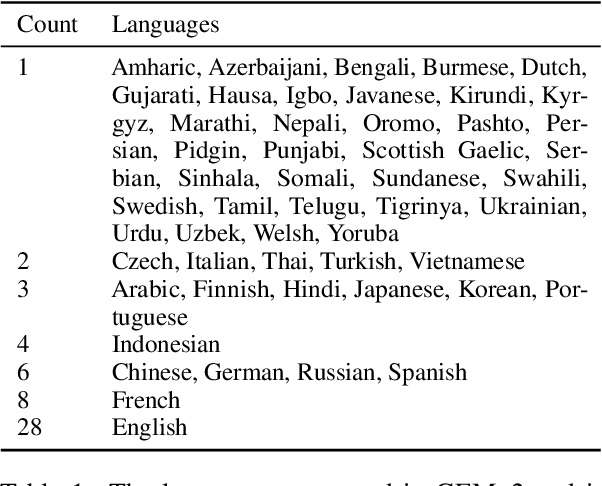
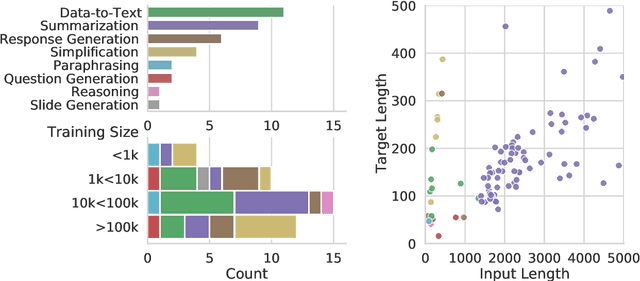
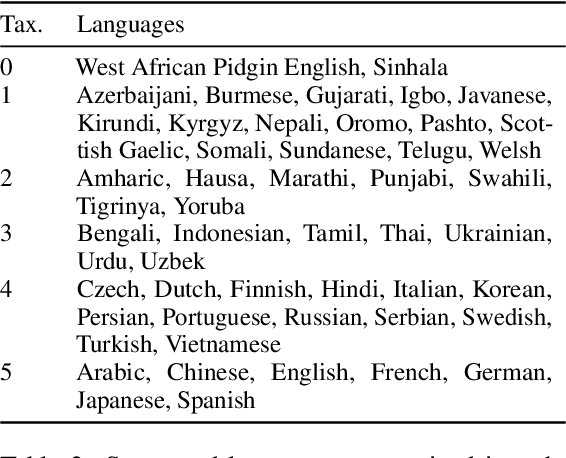
Abstract:Evaluation in machine learning is usually informed by past choices, for example which datasets or metrics to use. This standardization enables the comparison on equal footing using leaderboards, but the evaluation choices become sub-optimal as better alternatives arise. This problem is especially pertinent in natural language generation which requires ever-improving suites of datasets, metrics, and human evaluation to make definitive claims. To make following best model evaluation practices easier, we introduce GEMv2. The new version of the Generation, Evaluation, and Metrics Benchmark introduces a modular infrastructure for dataset, model, and metric developers to benefit from each others work. GEMv2 supports 40 documented datasets in 51 languages. Models for all datasets can be evaluated online and our interactive data card creation and rendering tools make it easier to add new datasets to the living benchmark.
Extracting Latent Steering Vectors from Pretrained Language Models
May 10, 2022



Abstract:Prior work on controllable text generation has focused on learning how to control language models through trainable decoding, smart-prompt design, or fine-tuning based on a desired objective. We hypothesize that the information needed to steer the model to generate a target sentence is already encoded within the model. Accordingly, we explore a different approach altogether: extracting latent vectors directly from pretrained language model decoders without fine-tuning. Experiments show that there exist steering vectors, which, when added to the hidden states of the language model, generate a target sentence nearly perfectly (> 99 BLEU) for English sentences from a variety of domains. We show that vector arithmetic can be used for unsupervised sentiment transfer on the Yelp sentiment benchmark, with performance comparable to models tailored to this task. We find that distances between steering vectors reflect sentence similarity when evaluated on a textual similarity benchmark (STS-B), outperforming pooled hidden states of models. Finally, we present an analysis of the intrinsic properties of the steering vectors. Taken together, our results suggest that frozen LMs can be effectively controlled through their latent steering space.
Don't Say What You Don't Know: Improving the Consistency of Abstractive Summarization by Constraining Beam Search
Mar 16, 2022



Abstract:Abstractive summarization systems today produce fluent and relevant output, but often "hallucinate" statements not supported by the source text. We analyze the connection between hallucinations and training data, and find evidence that models hallucinate because they train on target summaries that are unsupported by the source. Based on our findings, we present PINOCCHIO, a new decoding method that improves the consistency of a transformer-based abstractive summarizer by constraining beam search to avoid hallucinations. Given the model states and outputs at a given step, PINOCCHIO detects likely model hallucinations based on various measures of attribution to the source text. PINOCCHIO backtracks to find more consistent output, and can opt to produce no summary at all when no consistent generation can be found. In experiments, we find that PINOCCHIO improves the consistency of generation (in terms of F1) by an average of~67% on two abstractive summarization datasets.
Natural Adversarial Objects
Nov 07, 2021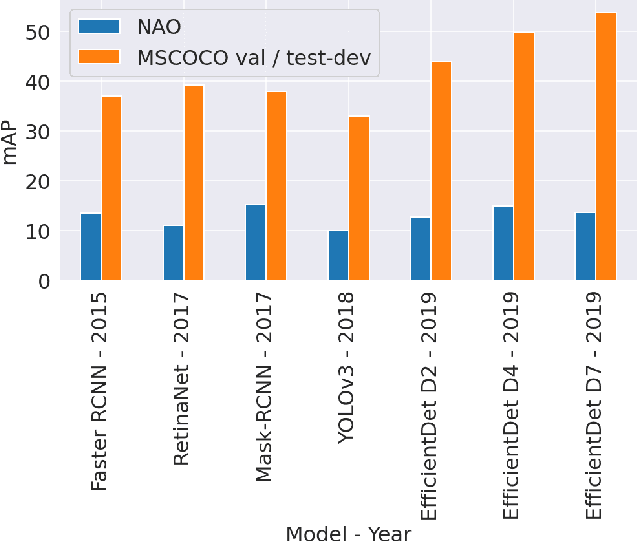



Abstract:Although state-of-the-art object detection methods have shown compelling performance, models often are not robust to adversarial attacks and out-of-distribution data. We introduce a new dataset, Natural Adversarial Objects (NAO), to evaluate the robustness of object detection models. NAO contains 7,934 images and 9,943 objects that are unmodified and representative of real-world scenarios, but cause state-of-the-art detection models to misclassify with high confidence. The mean average precision (mAP) of EfficientDet-D7 drops 74.5% when evaluated on NAO compared to the standard MSCOCO validation set. Moreover, by comparing a variety of object detection architectures, we find that better performance on MSCOCO validation set does not necessarily translate to better performance on NAO, suggesting that robustness cannot be simply achieved by training a more accurate model. We further investigate why examples in NAO are difficult to detect and classify. Experiments of shuffling image patches reveal that models are overly sensitive to local texture. Additionally, using integrated gradients and background replacement, we find that the detection model is reliant on pixel information within the bounding box, and insensitive to the background context when predicting class labels. NAO can be downloaded at https://drive.google.com/drive/folders/15P8sOWoJku6SSEiHLEts86ORfytGezi8.
Quality at a Glance: An Audit of Web-Crawled Multilingual Datasets
Mar 22, 2021
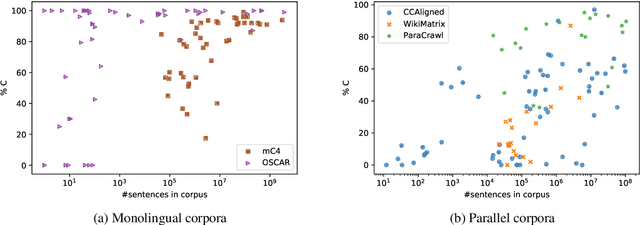
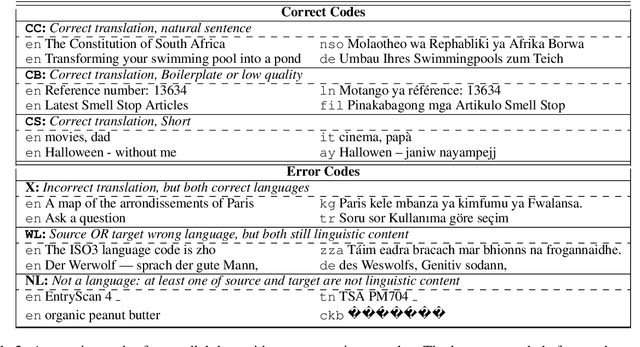
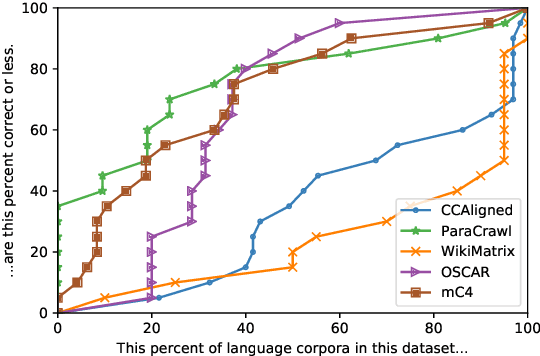
Abstract:With the success of large-scale pre-training and multilingual modeling in Natural Language Processing (NLP), recent years have seen a proliferation of large, web-mined text datasets covering hundreds of languages. However, to date there has been no systematic analysis of the quality of these publicly available datasets, or whether the datasets actually contain content in the languages they claim to represent. In this work, we manually audit the quality of 205 language-specific corpora released with five major public datasets (CCAligned, ParaCrawl, WikiMatrix, OSCAR, mC4), and audit the correctness of language codes in a sixth (JW300). We find that lower-resource corpora have systematic issues: at least 15 corpora are completely erroneous, and a significant fraction contains less than 50% sentences of acceptable quality. Similarly, we find 82 corpora that are mislabeled or use nonstandard/ambiguous language codes. We demonstrate that these issues are easy to detect even for non-speakers of the languages in question, and supplement the human judgements with automatic analyses. Inspired by our analysis, we recommend techniques to evaluate and improve multilingual corpora and discuss the risks that come with low-quality data releases.
The GEM Benchmark: Natural Language Generation, its Evaluation and Metrics
Feb 03, 2021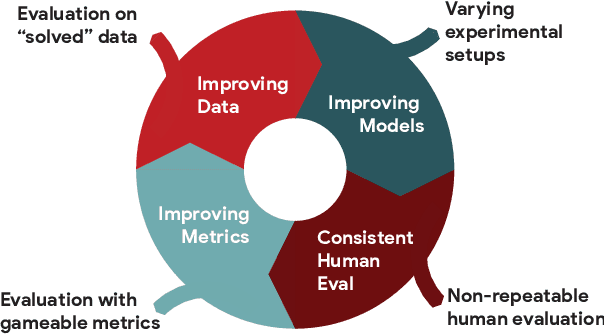
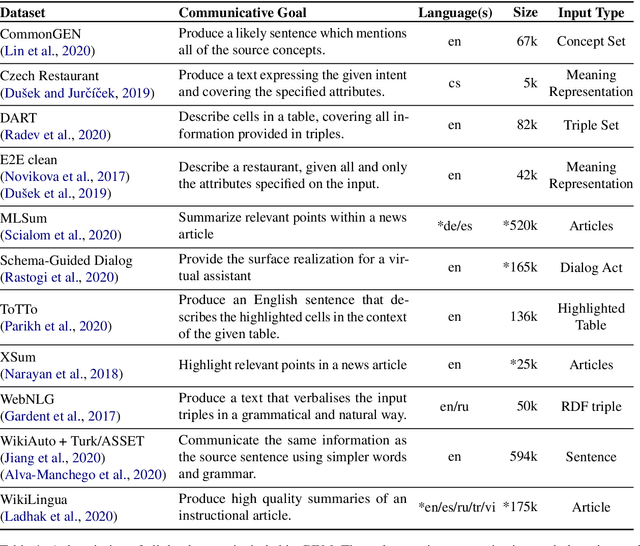
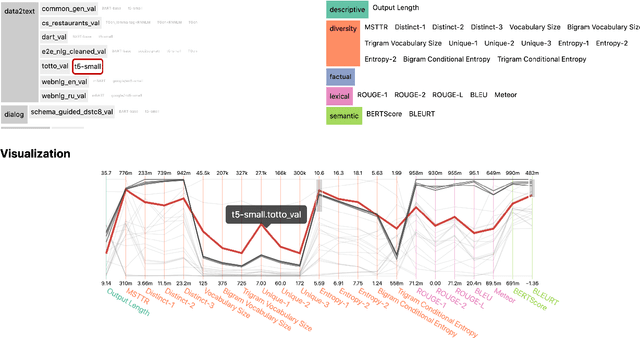
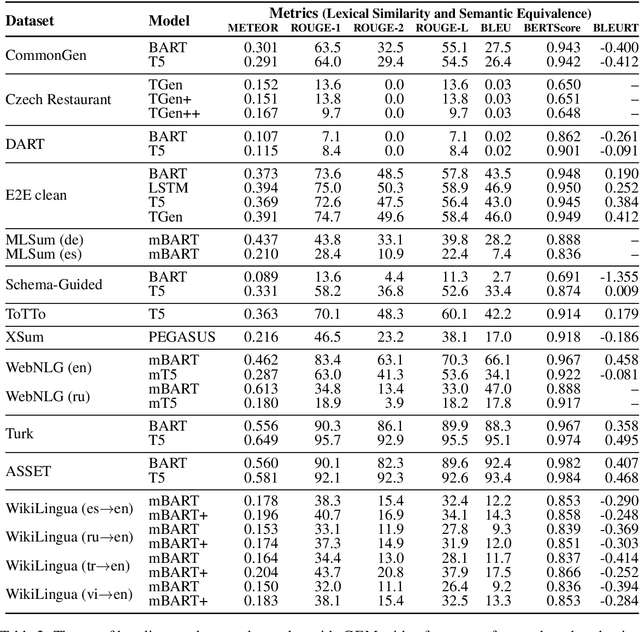
Abstract:We introduce GEM, a living benchmark for natural language Generation (NLG), its Evaluation, and Metrics. Measuring progress in NLG relies on a constantly evolving ecosystem of automated metrics, datasets, and human evaluation standards. However, due to this moving target, new models often still evaluate on divergent anglo-centric corpora with well-established, but flawed, metrics. This disconnect makes it challenging to identify the limitations of current models and opportunities for progress. Addressing this limitation, GEM provides an environment in which models can easily be applied to a wide set of corpora and evaluation strategies can be tested. Regular updates to the benchmark will help NLG research become more multilingual and evolve the challenge alongside models. This paper serves as the description of the initial release for which we are organizing a shared task at our ACL 2021 Workshop and to which we invite the entire NLG community to participate.
A Survey of Deep Learning Approaches for OCR and Document Understanding
Nov 27, 2020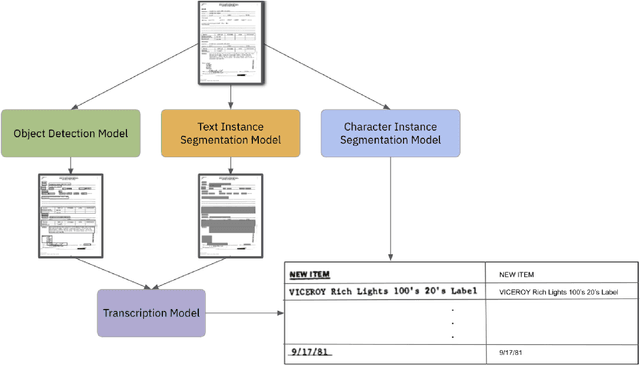
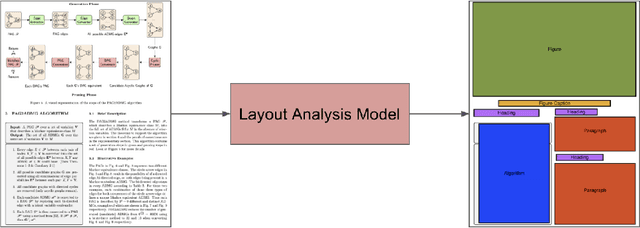
Abstract:Documents are a core part of many businesses in many fields such as law, finance, and technology among others. Automatic understanding of documents such as invoices, contracts, and resumes is lucrative, opening up many new avenues of business. The fields of natural language processing and computer vision have seen tremendous progress through the development of deep learning such that these methods have started to become infused in contemporary document understanding systems. In this survey paper, we review different techniques for document understanding for documents written in English and consolidate methodologies present in literature to act as a jumping-off point for researchers exploring this area.
 Add to Chrome
Add to Chrome Add to Firefox
Add to Firefox Add to Edge
Add to Edge